
With its stunning sandstone formations, and its convenient location along the only major north/south road on the island, Isalo National Park lays claim to the honor of being the most visited National Park in Madagascar. Not by me, though; on my previous two visits to Madagascar I got nowhere near this park, so I was particularly interested to see some new-to-me arid-zone wildlife.
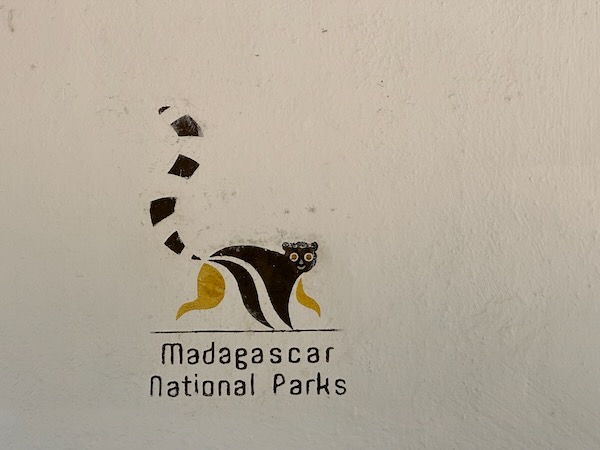
Cute li'l logo
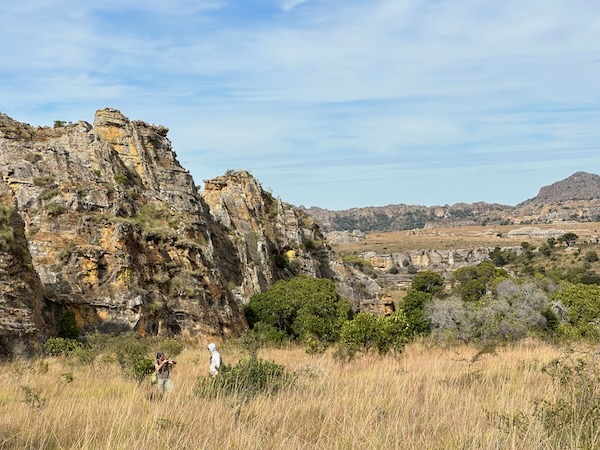
José showing Mike his latest find

Rainer contemplating the scenic vista
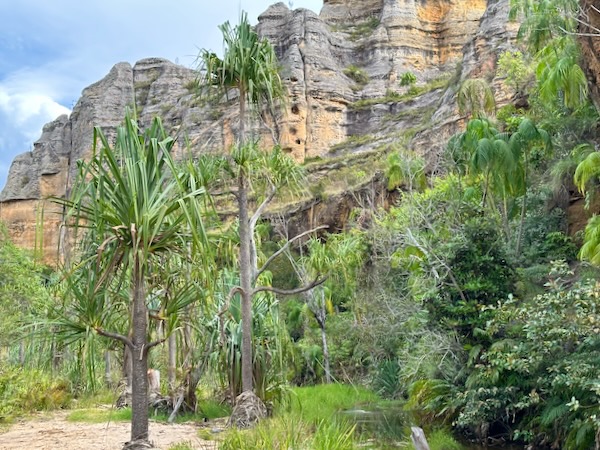
Though mostly a hot and dry place, Isalo does include lush green river canyons dug out of the sandstone. We stopped at this one for a sack lunch, the option of a swim in a beautiful natural pool, and some gecko-spotting.
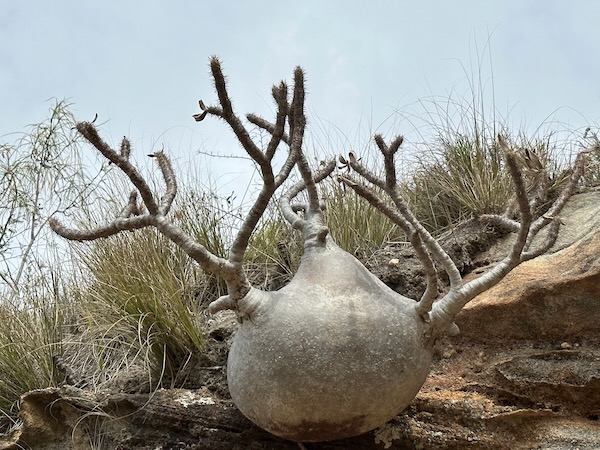
Elephant's Foot, Pachypodium rosulatum
This is more typical of the (weird) plant life in this savannah-and-desert environment.
As with all of our other stops in Madagascar, this area had many fine moths and butterflies worthy of admiration.
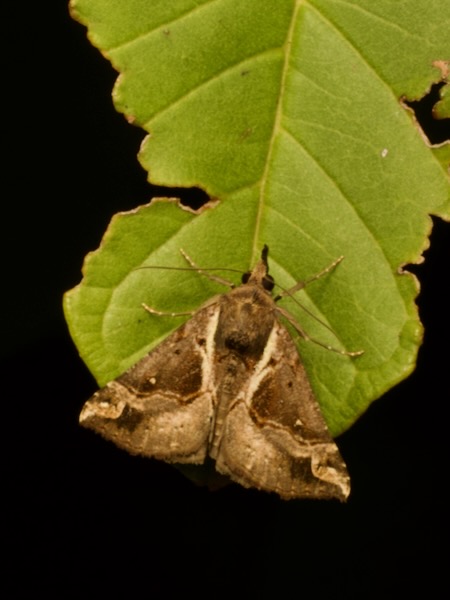
Yellow Streaked Snout, Hypena varialis
This is your basic moth, with some nice patterning.

Fire-flag Plume Moth, Sphenarches anisodactylus
This looks like a furry and spiky crane fly, but is in fact another moth.

Ericeia sp
This very flat moth was nearly invisible in the leaf litter.
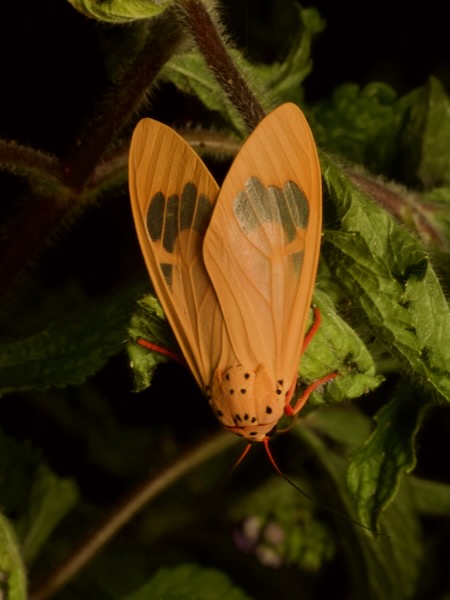
Amerila madagascariensis
This bright orange moth was quite visible. Not a lot of camouflage going on here. I suspect this means that it is toxic to potential predators, but I have no actual knowledge backing up that suspicion.
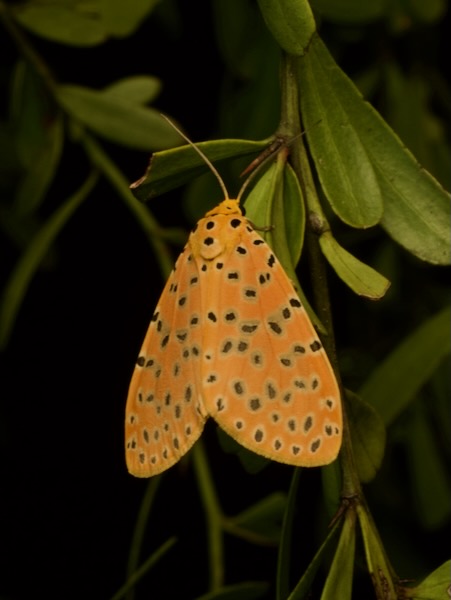
Cheetah, Alytarchia amanda
This orange moth saw that orange moth's spotty body and raised it with a spotty body plus spotty wings.
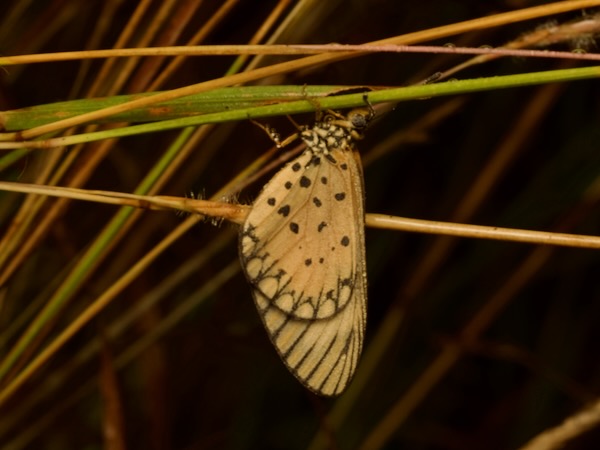
Dancing Amber, Telchinia serena
At long last, an actual butterfly. But still orange and spotty.
In addition to the fine moths and butterflies, Isalo also supported an assortment of fancy grasshoppers. Here are my three favorites from this trip.
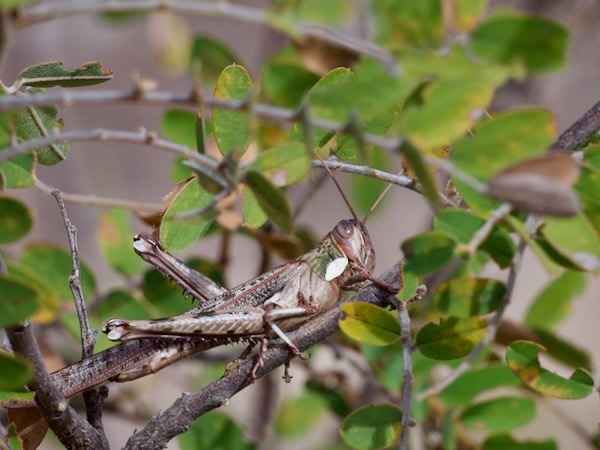
Rhadinacris schistocercoides
This large, leggy locust is used as a food source by some Malagasy people.
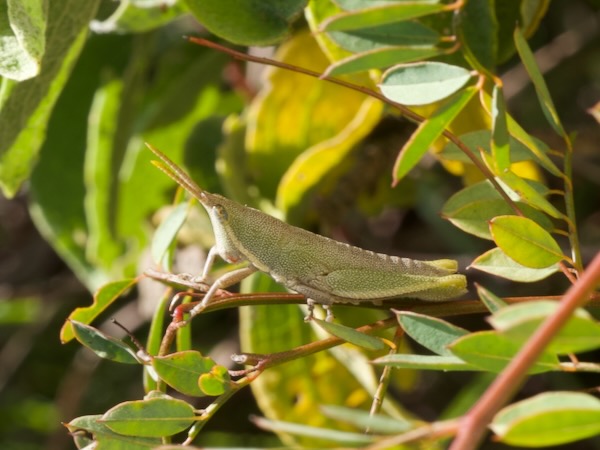
Pyrgohippus productus
This intricately spotted fellow is one of the appropriately named Gaudy Grasshoppers (family Pyrgomorphidae). This species doesn't bother with wings.

Caprorhinus ranohirae
This is another species of Gaudy Grasshoppers; very similar in shape and patterning to Pyrgohippus, but with a different paint job. As you have probably already concluded from this photo, this is another wingless species.
I also saw five mantis species in this area, but I will attempt to limit myself to just three here.
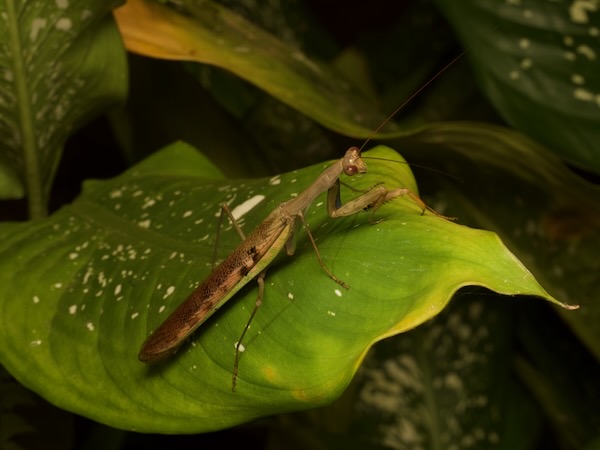
Flag Mantis, Polyspilota aeruginosa
This is a large and fairly standard-shaped mantis.

Stick Mantis, Tenodera superstitiosa
This one has elongated proportions, and a teeny head for its size. Good at hiding among twigs.
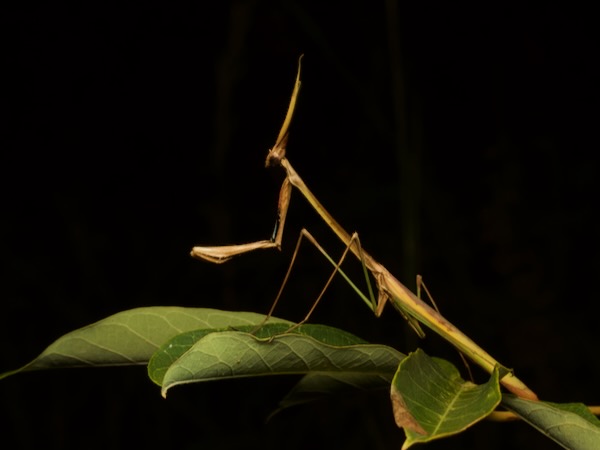
Madagascar Cone-head Mantis, Idolomorpha madagascariensis
This can't compete with the Scarcer Ghost Mantis we saw in Anja, but is still a most excellent mantis, with a crazy ancient-Egypt-style headdress.
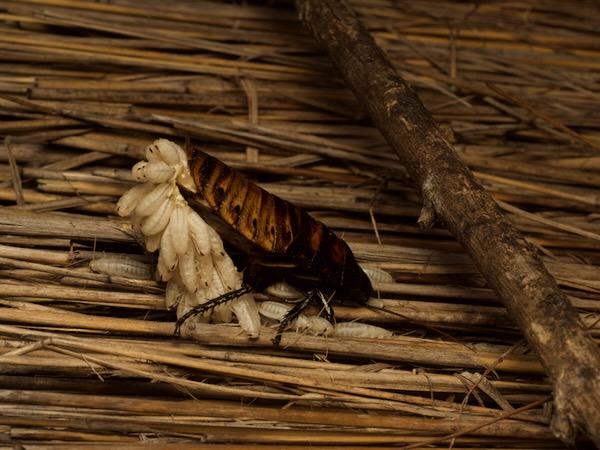
Madagascar Hissing Cockroach, Gromphadorhina portentosa
Everyone loves a large cockroach extruding a bunch of baby cockroaches like toothpaste from a tube, right? Don't they? The good news is that Madagascar Hissing Cockroaches are slow moving and make a cute hissing sound when disturbed.

Two-tailed Spider, Hersilia sp
Two-tailed Spiders have the same number of tails as all other spiders: zero tails. But the web-secreting spinnerets sticking out of their rear ends are approximately where tails would be if spiders had tails. Which they don't. What this particular Two-tailed Spider does have (hint: not a tail) is some most excellent camouflage while perched on a tree trunk, awaiting prey.

Opisthacanthus madagascariensis
Up on the the sandstone plateau, we looked under rocks and stones as herpers are inclined to do. One or two lizards were found that way, but mostly we found these fat and happy scorpions. Since they have great big claws and relatively small stingers, they are probably not particularly venomous. Still, none of us volunteered to test this theory.
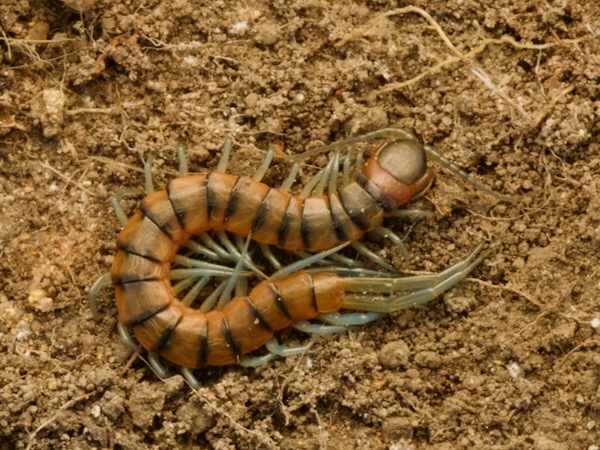
Scolopendra antananarivoensis
The generous scorpions were willing to share their rocks with an occasional beautiful centipede.
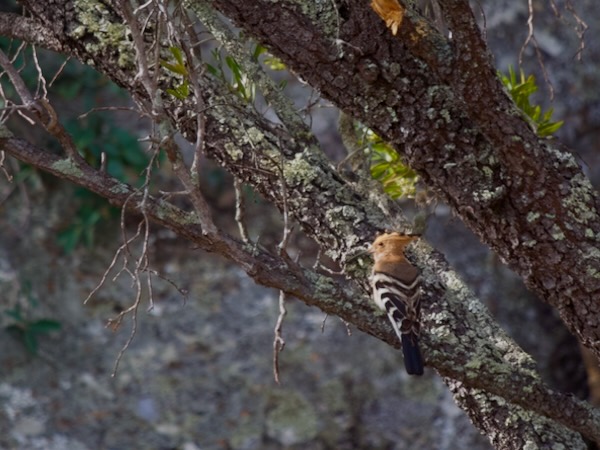
Madagascar Hoopoe, Upupa marginata
We saw a few birds, most of which had no interest in waiting to be photographed. This was my favorite, with a combination of an odd shape, eye-catching pattern, and goofy-sounding name.
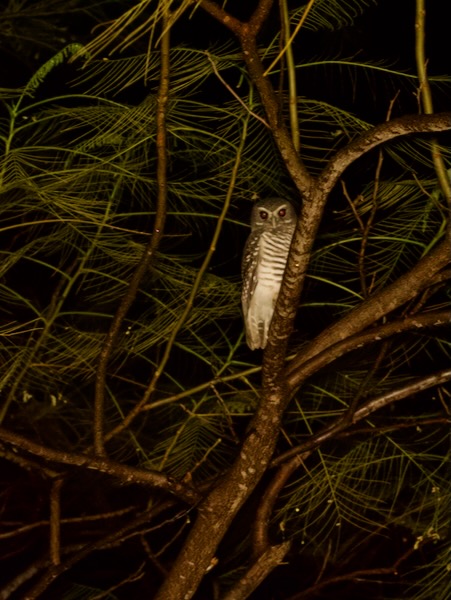
White-browed Owl, Athene superciliaris
We stayed at a Malagasy-German ecolodge called Isalo Ranch, located very near the National Park proper. A pair of these owls could be seen at night staring ominously down at us from high in the trees on the lodge grounds.

Madagascan Fruit Bat, Eidolon dupreanum
Not to be outdone by mere birds, this large bat stared down at us from a tree just outside the lodge's restaurant.
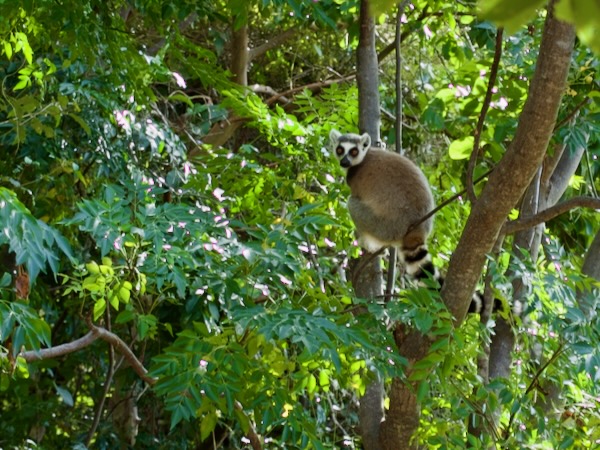
Ring-tailed Lemur, Lemur catta
As at Anja, Ring-tailed Lemurs are probably the main wildlife calling card for this park, though apparently quite a few people visit just for the spectacular scenery. I'm not certain how many people come primarily for the scorpions and centipedes, but surely some of them do.

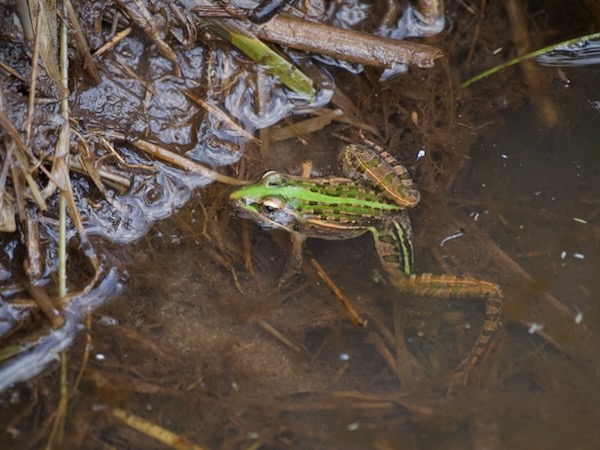
Mascarene Ridged Frog, Ptychadena mascareniensis
Irrigation ditches around Isalo Ranch provided home to many of these frogs, which you are now very familiar with if you've been reading this account from the beginning. If you somehow just started on this page, you should really jump back to the beginning and start there.
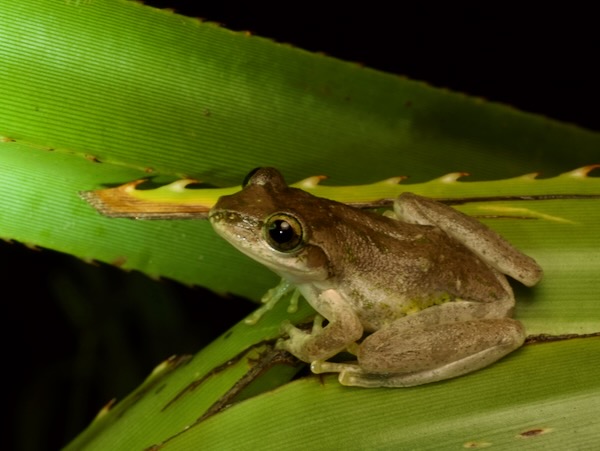

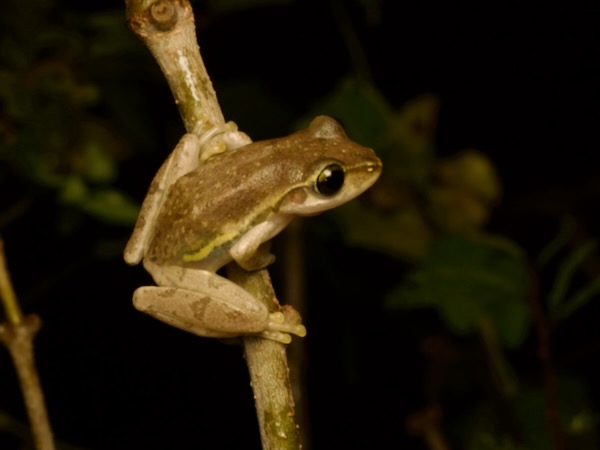
Western Bright-eyed Frog, Boophis doulioti
Because Madagascar's National Parks are closed to the public at night, we had to find alternative locations for our nocturnal wanderings. We looked around on the extensive grounds of Isalo Ranch, and also checked out a couple of nearby spots outside of the park boundaries. We were hoping to find Scaphiophryne gottlebei, a particularly beautiful frog endemic to this area, but we were long past the wet season when that frog is typically seen, and we had no luck. Other than the omnipresent Ptychadena madagascariensis, we only saw two species of frogs. Both of them were familiar looking, but new to us on this trip. Boophis doulioti is very similar to the Boophis tephraeomystax we had seen earlier, but found in the south and west rather than the north and east.
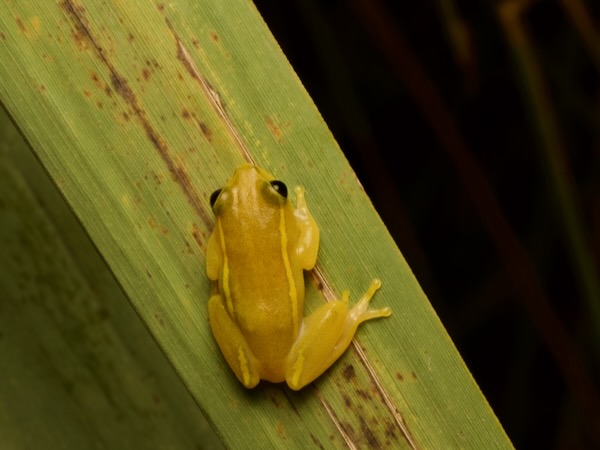

Andranolava Reed Frog, Heterixalus luteostriatus
Along the same lines, Heterixalus luteostriatus is very similar to the Heterixalus betsileo we had seen earlier, but found further to the west. The way the yellow stripes continue onto the legs is a distinguishing feature of this species.
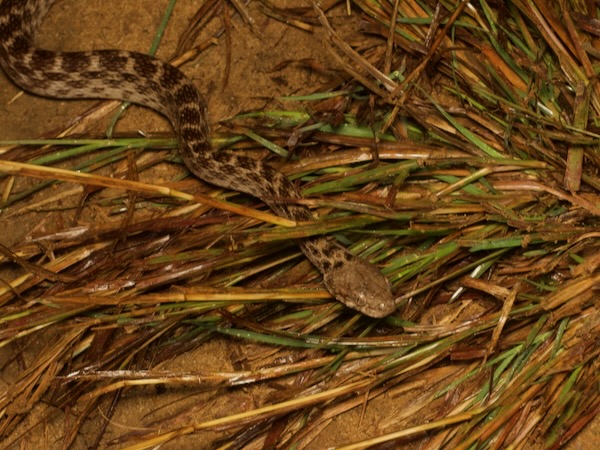
Common Madagascar Cat Snake, Madagascarophis colubrinus
Our only serpent in the Isalo area was another of these default snakes, out crawling on a rainy night.
So far, you have been thinking, Isalo produced not that many frogs, and only one snake. Fortunately, it proved to be a wonderful place for lizards.

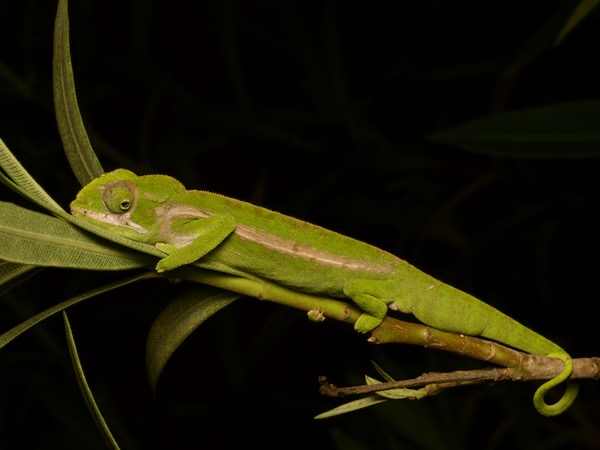

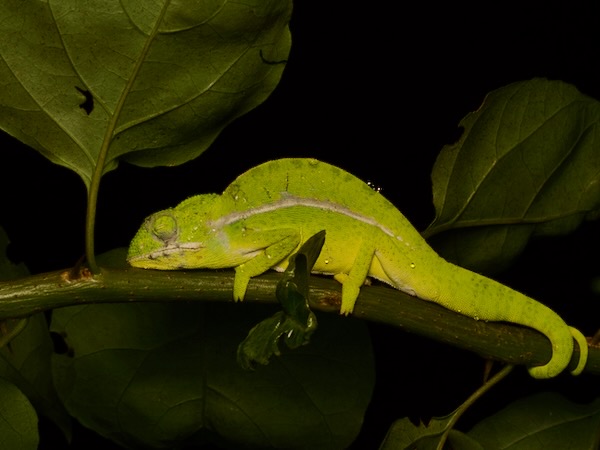
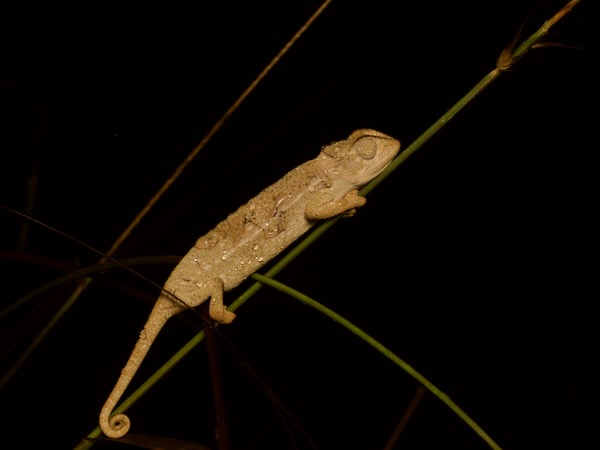
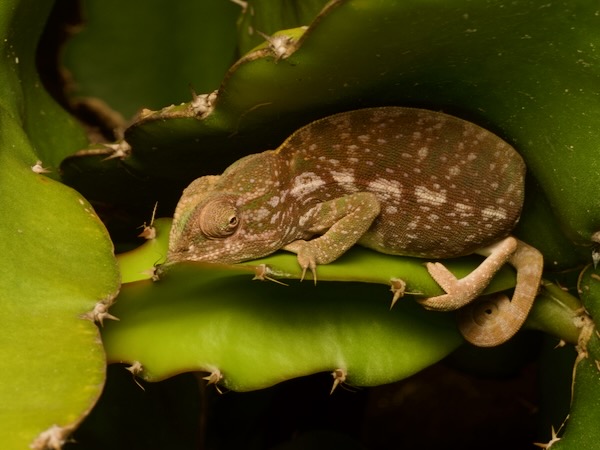
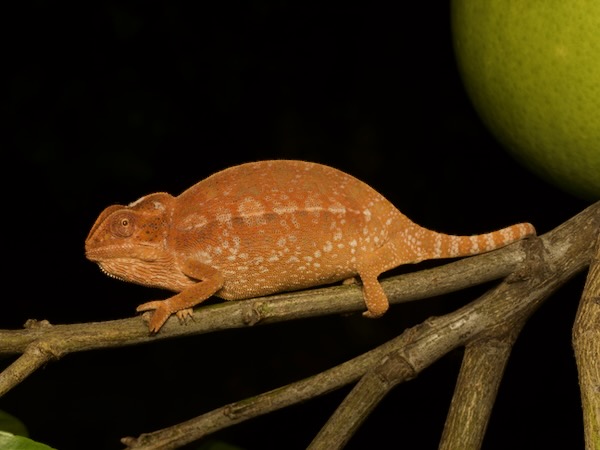
Southern Carpet Chameleon, Furcifer major
The foliage around Isalo Ranch was thick with these mid-sized chameleons, in an assortment of colors. I photographed about thirty of them.
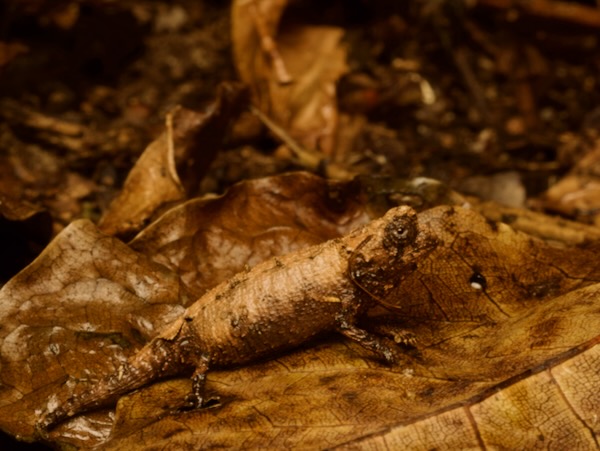
Brygoo's Leaf Chameleon, Brookesia brygooi
In contrast to the easy-to-find Southern Carpet Chameleons, these little guys were incredibly difficult to find. At least a dozen person-hours of searching in ideal habitat resulted in the discovery of exactly one of these adorable mini chameleons.
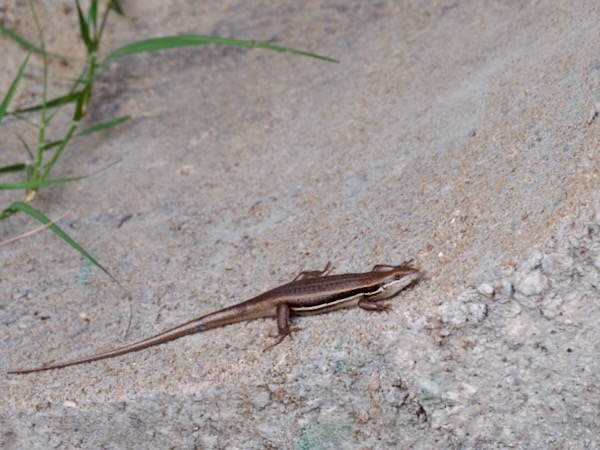
Gravenhorst's Mabuya, Trachylepis gravenhorstii
On the grounds of Isalo Ranch we found a few of these skinks, which we had also seen earlier on the trip in very different habitats. It is likely that T. gravenhorstii will be split into multiple species someday, and I'll be ready to capitalize on that since I have photos of them from many different locations.
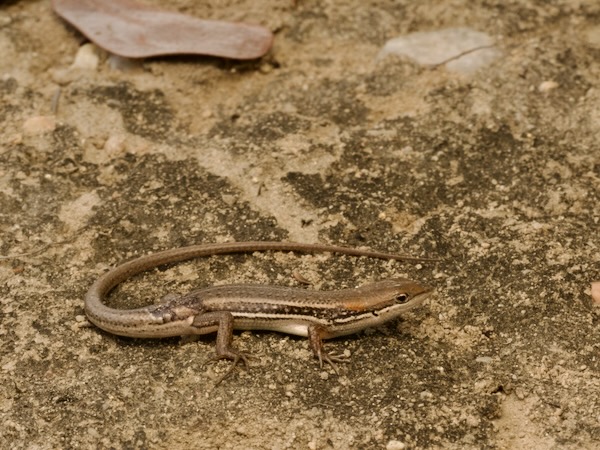
Elegant Mabuya, Trachylepis elegans
This species is also widespread and common across much of Madagascar, but this was the first one we found on this trip that, with its orange/red patch on the side of its neck, was clearly marked as T. elegans.

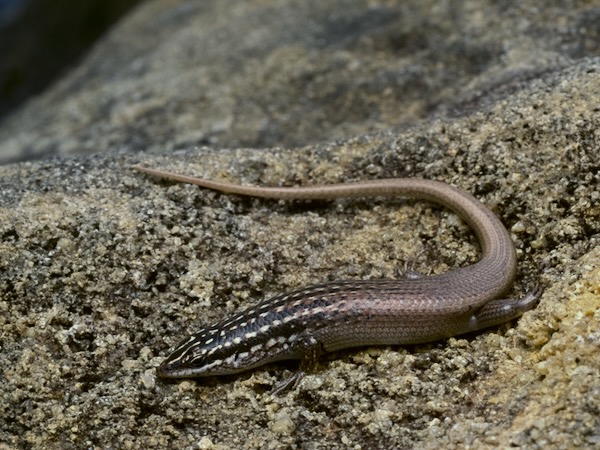
Isalo Skink, Trachylepis nancycoutuae
The rock-dwelling T. nancycoutuae is endemic to this area. Several closely related skinks in Madagascar have similar patterns, but this is the first one we saw on this trip (and the first one I had ever seen).

Flexiseps sp
While thoroughly searching the precise microhabitat for Scaphiophryne gottlebei, the pretty frog we never saw, José and Frank came up with this consolation prize: a beautiful iridescent skink that nobody recognized and that didn't seem to match anything in the field guide. Madagascar herp expert Dr. Mark Scherz later told us that it was probably an undescribed species of Flexiseps, a group of skinks not previously known from this area.
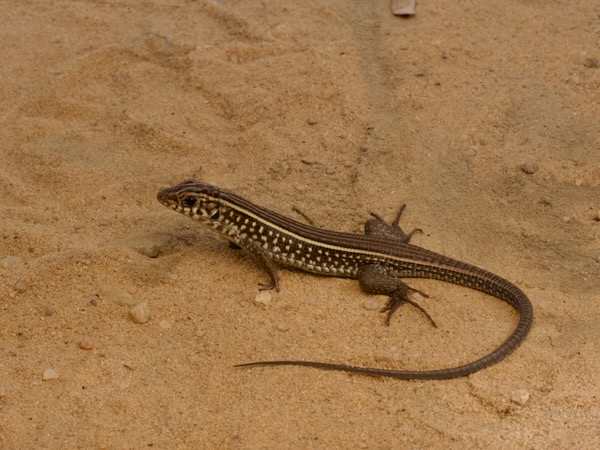
Karsten's Girdled Lizard, Zonosaurus karsteni
Back up on the plateau, where scorpions and centipedes dwelled beneath rocks, we saw a couple of these speedy lizards doing their best to evade us. But Frank and José ensured that this one at least would pose for our cameras. This species is a close relative of the Zonosaurus ornatus we had seen at Ranomafana, but occupies a very different habitat.

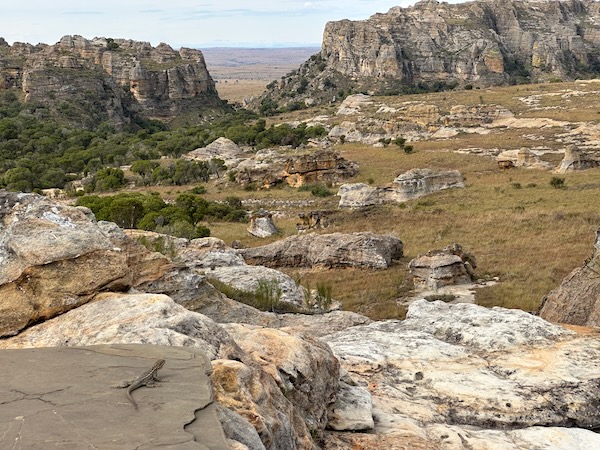
Dumeril's Madagascar Swift, Oplurus quadrimaculatus
These rock-dwellers seem to be substrate-agnostic. At Anja they clung to granite; here at Isalo they sat on sandstone.
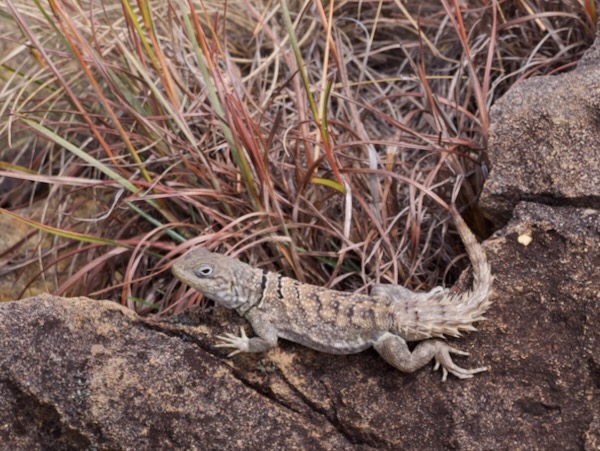
Merrem's Madagascar Swift, Oplurus cyclurus
I was especially happy to find these spiky-tailed Oplurus at Isalo, because I hadn't seen them before. They are however quite similar to Oplurus cuvieri, which we saw at Palmarium and which I had seen in northwest Madagascar on an earlier trip.
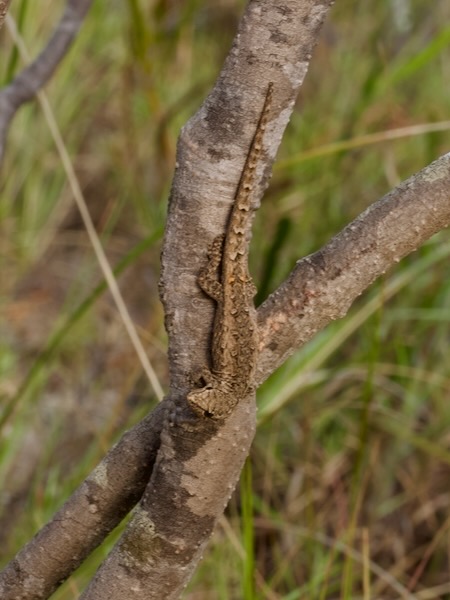
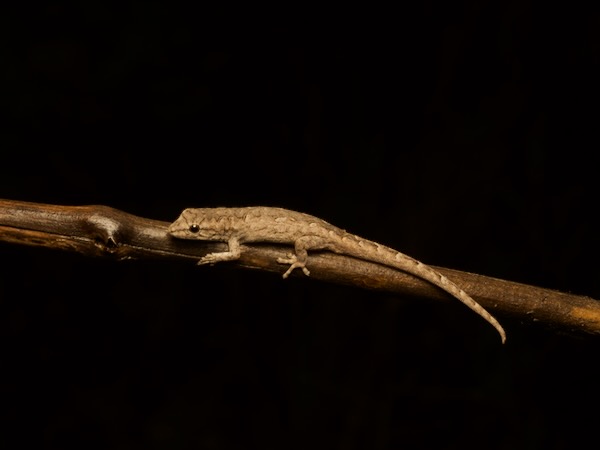
Lygodactylus sp
A 2018 herpetofauna review of the Isalo Massif reported two Lygodactylus species, both undescribed: Lygodactylus sp. aff. pictus Ca01 "Isalo" and Lygodactylus sp. aff. tuberosus Ca02 "Isalo". So these are probably one or both of those, but it would take someone who knows much more about Lygodactylus than I do to be more specific.
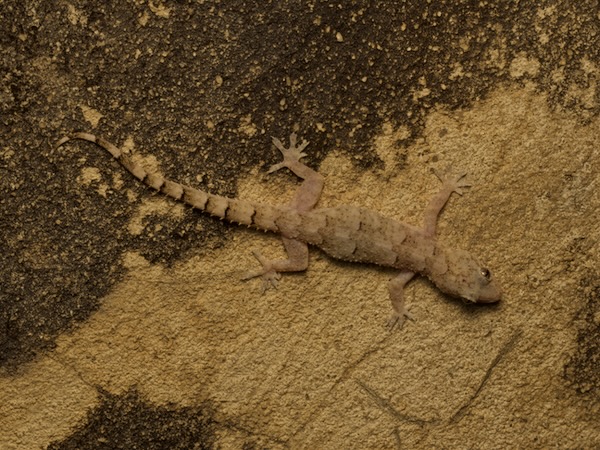
Farquhar Half-toed Gecko, Hemidactylus mercatorius
We saw these standard "house geckos" in most of the places we visited on this trip.
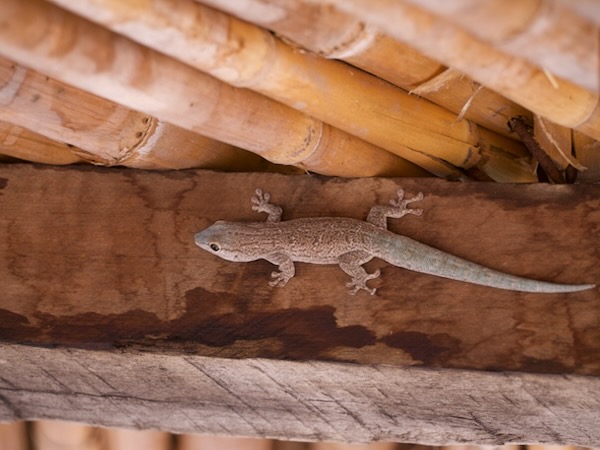
Thick Tail Gecko, Phelsuma mutabilis
Ah, good old Phelsuma mutabilis, the most widespread of the so-called "dull-coloured day geckos".
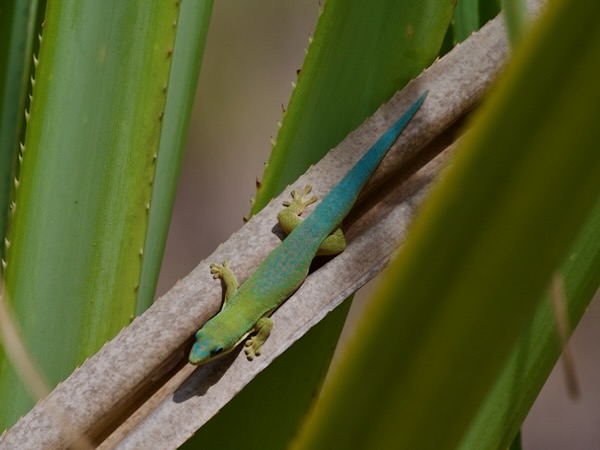
Morondava Day Gecko, Phelsuma hielscheri
Isalo also revealed this far from "dull-coloured" beauty, which is known only from here and a few small areas near the west coast.
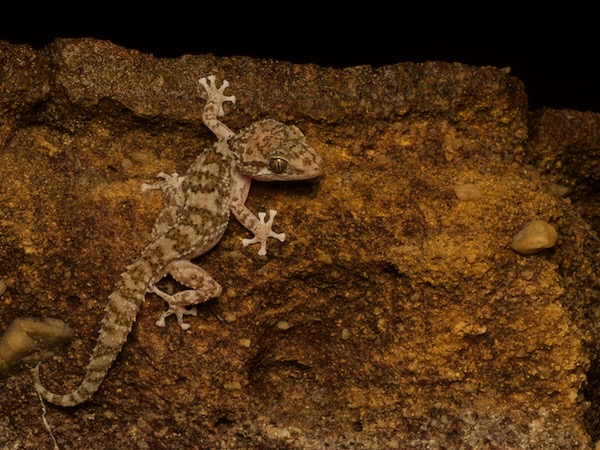
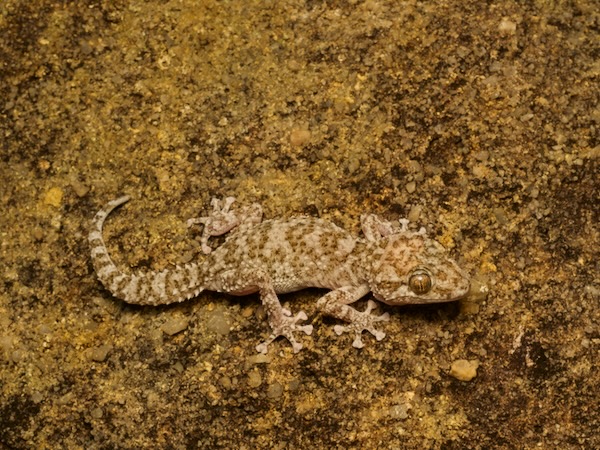
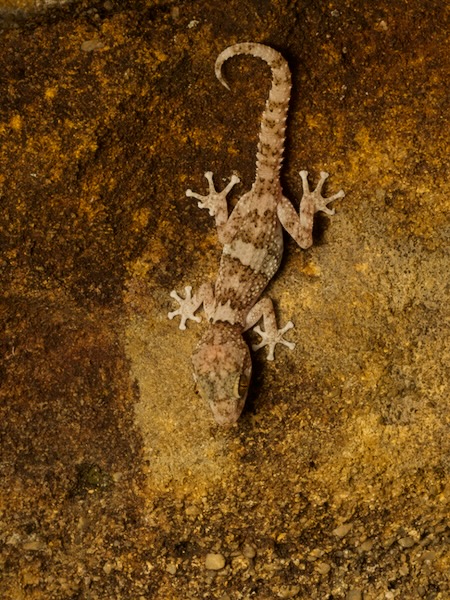
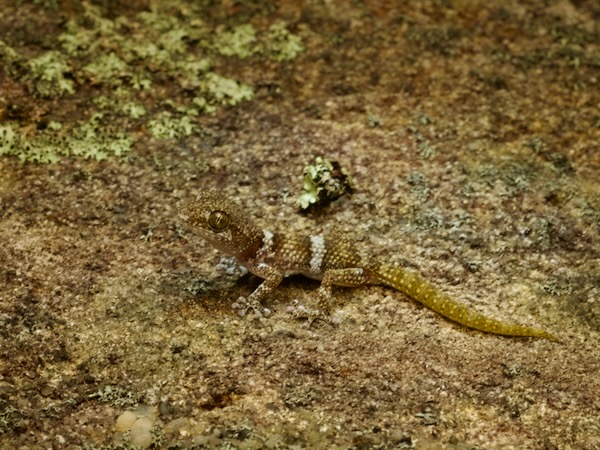
Betroka Leaf-toed Gecko, Paroedura guibeae
Even with strong competition from the gorgeous Phelsuma hielscheri, these big-headed, bumpy, and spiky rock-crawlers were my favorite geckos from Isalo. Their recent (2021) designation as a species makes them even more fun. (Before then they were considered to be a population of P. bastardi.) Plus, the little baby one is soooo cute!
Next: Arboretum d'Antsokay